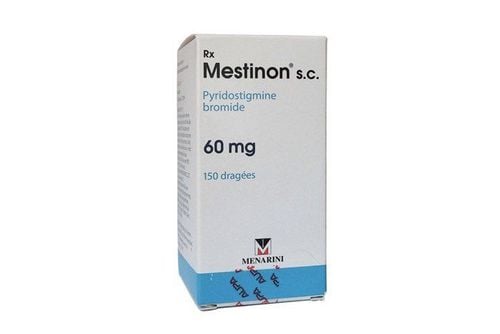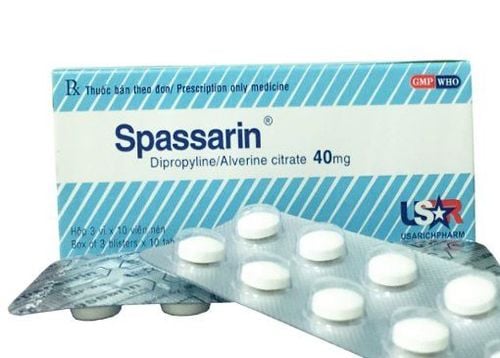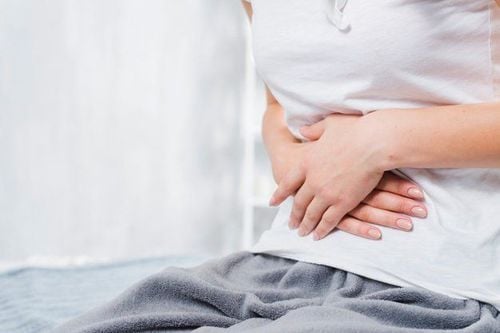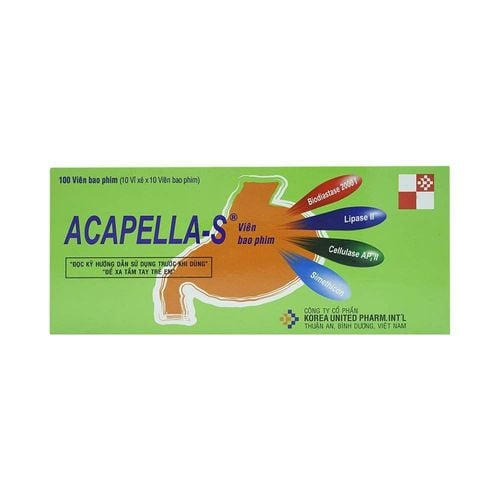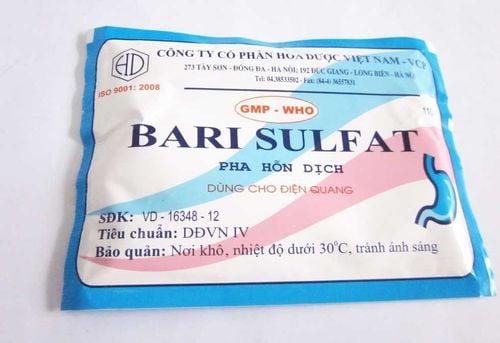This is an automatically translated article.
The article was professionally consulted with Master, Doctor Le Phuc Lien - Urologist - Department of General Surgery - Vinmec Central Park International General Hospital.Inguinal hernia in children is a major congenital disease, common in about 2-5% of children, the main cause is due to the remaining peritoneal canal. The incidence of boys is about 9 times greater than that of girls, mainly on the right side. Premature babies have a higher incidence of the disease.
1. Signs of inguinal hernia in children
The most noticeable manifestation of the disease is when the child has an abnormal swelling in the groin - scrotum for boys and pubic area for girls. In particular, the size of the tumor can enlarge when the baby is active, playing a lot or crying, and it can also collapse when the baby is lying down and sleeping. The bulge is usually present from the moment the baby is born, soft, and painless. Therefore, the family is often subjective, until there are abnormal symptoms such as pain in the inguinal canal, vomiting or nausea, abdominal distension, and the hernia cannot go up to take the baby to the doctor.
When examined, inguinal hernia is diagnosed fairly easily through clinical examination, palpation... and ultrasound of inguinal hernia.
Some other tests may be ordered by the doctor such as:
Laparoscopy Laparoscopic CT Scan of the abdomen Once diagnosed as inguinal hernia, the baby needs to be treated as soon as possible. The subjective thought that for a long time the bulge will collapse on its own is completely wrong, because the longer the hernia mass gets bigger and bigger, the weaker the abdominal wall becomes, and the more difficult it is to recover the abdominal wall.
If left for a long time, the disease can lead to many dangerous complications, such as strangulation, pain in the neck of the hernia sac, intestinal obstruction, intestinal perforation, intestinal necrosis, ovarian necrosis in girls or sperm damage. complete in boys.
2. Treatment methods for inguinal hernia in children
The principle is surgical treatment. Patients can be treated according to the traditional surgical method or the laparoscopic method.
Traditional surgical method: Open hernia circumcision. With this traditional open surgery technique, the patient will be anesthetized, so there is no pain during the surgery. The specialist will make a small incision along the lower abdominal crease, push the intestines or the organization inside the hernia capsule back into the appropriate position, dissect the hernia capsule and tighten it. The average hospital stay is relatively short, only about 2-3 days.
Laparoscopic surgery method: Laparoscopic surgery has been applied in the diagnosis and treatment of inguinal hernia. Laparoscopic surgery uses very small skin incisions to insert instruments into the abdomen. Instrument size is only 3mm, only for children, incision achieves aesthetic results and maximum pain reduction after surgery.
3. Laparoscopic surgery for inguinal hernia in children at Vinmec
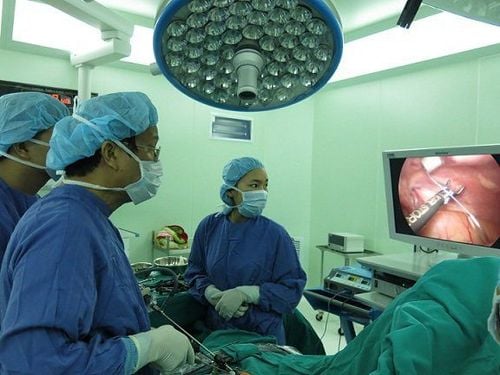
Mổ nội soi thoát vị bẹn cho trẻ em tại bệnh viện
Indicated subjects: Children <= 16 years old with 1 or 2 bilateral inguinal hernia. Contraindications: Children with severe co-morbidities cannot perform laparoscopic surgery (eg heart failure, respiratory failure,...) Outstanding advantages of the method: Surgeons can easily recognize The vas deferens and blood vessels supplying the testicles can be seen, and the peritoneal tubes can be sutured (the cause of inguinal hernias in children) without touching the vas deferens or the blood vessels supplying the testicles. Therefore, laparoscopic surgery avoids two dangerous complications, namely vasectomy or testicular atrophy, complications that can be encountered during open surgery. In addition, laparoscopy also allows assessment of the contralateral peritoneal tube and suture immediately if it remains open. Therefore, it is possible to prevent inguinal hernia on the opposite side.
Besides, compared with the 2cm long incision of open surgery, laparoscopic surgery has high aesthetics with only 2mm incision, almost no scars after surgery.
Children have no pain, recover early, can be discharged from the hospital only 1 day after surgery.
Normal expression after surgery/implementation: The patient has almost no pain after surgery. The child is almost active on the first day after surgery
Post-operative symptoms are abnormal and need to be re-examined immediately: Painful swelling in the groin area, painful swelling of the testicle
Based on the results of clinical examination and ultrasound, doctor The paediatrician will make the final decision. If there is a diagnosis of inguinal hernia, the patient will be supported with the best treatment. Early disease detection as well as timely treatment is always a top priority, in order to minimize treatment costs. Absolutely do not wait for older children to undergo surgery to avoid complications later.
At Vinmec Hai Phong International General Hospital, with a team of experienced doctors and a system of modern medical equipment, early disease detection and surgery by modern laparoscopic surgery method, inguinal hernia in children is no longer a concern of parents.
Please dial HOTLINE for more information or register for an appointment HERE. Download MyVinmec app to make appointments faster and to manage your bookings easily.




